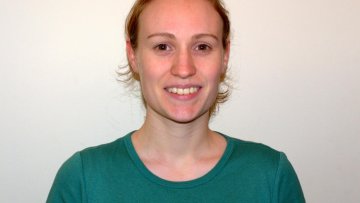Oxford Mathematician Doireann O'Kiely has been awarded the biennial Lighthill-Thwaites Prize for her work on the production of thin glass sheets. The prize is awarded by the Institute of Mathematics and its Applications to researchers who have spent no more than five years in full-time study or work since completing their undergraduate degrees.
12:00
Diffusion-approximation for some hydrodynamic limits
Abstract
We determine the hydrodynamic limit of some kinetic equations with either stochastic Vlasov force term or stochastic collision kernel. We obtain stochastic second-order parabolic equations at the limit. In the regime we consider, we also observe (or do not observe) some phenomena of enhanced diffusion. Joint works with Nils Caillerie, Arnaud Debussche, Martina Hofmanová.
14:30
Improving the rational Remez algorithm via adaptive barycentric representations
14:00
Soliton resolution conjecture
Abstract
We will give an overview of the Soliton Resolution Conjecture, focusing mainly on the Wave Maps Equation. This is a program about understanding the formation of singularities for a variety of critical hyperbolic/dispersive equations, and stands as a remarkable topic of research in modern PDE theory and Mathematical Physics. We will be presenting our contributions to this field, elaborating on the required background, as well as discussing some of the latest results by various authors.
Neutron reflection from mineral surfaces: Through thick and thin
Abstract
Conventional neutron reflection is a very powerful tool to characterise surfactants, polymers and other materials at the solid/liquid and air/liquid interfaces. Usually the analysis considers molecular layers with coherent addition of reflected waves that give the resultant reflected intensity. In this short workshop talk I will illustrate recent developments in this approach to address a wide variety of challenges of academic and commercial interest. Specifically I will introduce the challenges of using substrates that are thick on the coherence lengthscale of the radiation and the issues that brings in the structural analysis. I also invite the audience to consider if there may be some mathematical analysis that might lead us to exploit this incoherence to optimise our analysis. In particular, facilitating the removal of the 'background substrate contribution' to help us focus on the adsorbed layers of most interest.
14:30
Ill-conditioning and numerical stability in radial basis functions (RBFs) using frame theory
Abstract
We analyse the numerical approximation of functions using radial basis functions in the context of frames. Frames generalize the notion of a basis by allowing redundancy, while being restricted by a so-called frame condition. The theory of numerical frame approximations allows the study of ill-conditioning, inherently due to their redundancy, and suggests discretization techniques that still offer numerical stability to machine precision. We apply the theory to radial basis functions.
A weak universality result for the parabolic Anderson model
Abstract
We consider a class of nonlinear population models on a two-dimensional lattice which are influenced by a small random potential, and we show that on large temporal and spatial scales the population density is well described by the continuous parabolic Anderson model, a linear but singular stochastic PDE. The proof is based on a discrete formulation of paracontrolled distributions on unbounded lattices which is of independent interest because it can be applied to prove the convergence of a wide range of lattice models. This is joint work with Jörg Martin.


